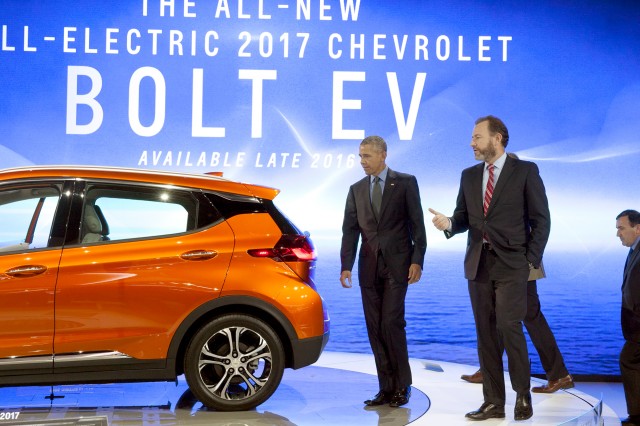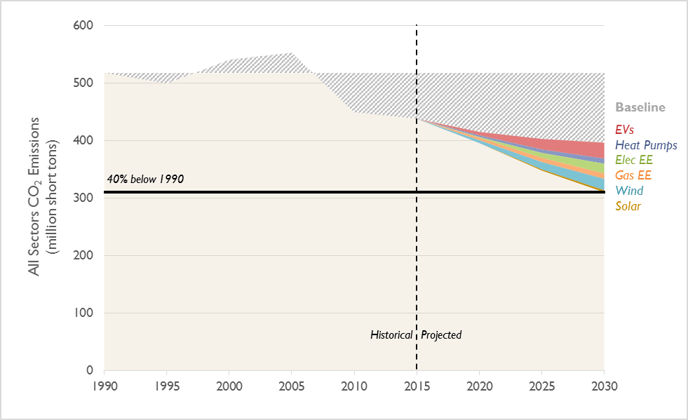Natural Gas Pipeline Leaks: Building a Bigger System Doesn’t Fix the Problem
Beneath our feet is a vast network of natural gas distribution infrastructure. The aging pipes in Rhode Island and...
Readers of this blog should be aware that we are enthusiastic supporters of electric vehicles and air-source heat pumps. Costs of these products have come down in recent years while quality has gone up. We see them as economically sensible ways to reduce greenhouse gas emissions, to the point that we see them as essential parts of any climate action plan. That would mean for a plan for Massachusetts, Rhode Island, any other state, your city or town, and your family. In our work, we are lucky to come in contact with experts who have figured all this out and who are kind enough to explain their findings to the rest of us. So please enjoy this blog from our guest, Patrick Knight of Synapse Energy Economics.
Since 2009, nine northeastern states have led the country in addressing greenhouse gas emissions from the electric sector. Working together under the Regional Greenhouse Gas Initiative (RGGI), Connecticut, Delaware, Maine, Maryland, Massachusetts, New Hampshire, New York, Rhode Island, and Vermont have already cut electric-sector carbon dioxide (CO2) emissions by 45 percent compared to their 1990 levels and have created a framework to drive deeper electric sector reductions in the future. RGGI’s electric sector carbon cap is complemented by individual state renewable portfolio standards (RPS) and energy efficiency resource standards (EERS) that are further helping to transform power generation in the region.
At the same time, all nine of these states have legislated targets or goals that require them to achieve longer-term economy-wide emission reductions, clustering around a 40 percent reduction from 1990 levels by 2030 and an 80 percent reduction by 2050. (Note that these are goals for emission reductions from all uses of energy—and not just from the electric sector.) While RGGI, state RPS programs, and state EERS programs will cause these nine states to make major strides in emission reductions, they’ll need to do more to reach the goals they’ve set for themselves.
In a March 2016 study, Synapse Energy Economics (on behalf of several environmental advocacy groups) evaluated the most cost-effective approaches for RGGI states to meet their 2030 climate goals. In addition to using electric-sector energy efficiency and renewables, this least-cost strategy achieves deep emission reductions by implementing new policies in the transportation, residential, commercial, and industrial sectors. Under current policies, by 2030, the nine RGGI states will likely achieve only 58 percent of their required reductions—a further 86 million short tons will need to be eliminated for these states to comply with state law.
To achieve further emission reductions, Synapse analyzed the impact of a number of electric-sector strategies, including higher levels of electric-sector energy efficiency, more renewables, as well as strategies that can reduce emissions outside the electric sector. The three non-electric strategies analyzed in our study included:

Together, these strategies from outside the electricity sector are responsible for meeting more than half of the incremental reductions needed to get to lower economy-wide emissions by 40 percent (see Figure 1).
Figure 1. Emission reductions required to meet 40 percent target in RGGI states

In the Northeast, implementing these non-electric measures is essential to achieving high levels of emission reductions. In addition, we found that:
 Electric heat pumps both heat and cool. Heat pumps are appliances that use electricity to absorb heat energy in cold areas (i.e., outside) and transfer it to indoor areas. Heat pumps have the advantage of being able to work in reverse—not only can they provide heating in winter months, but they take the place of a central air conditioning systems in the summer months. Heat pump technology has existed for decades, and these units are commonplace in Europe and Asia, but high-performing systems that function well in cold-weather climates as in many of the Northeast states have just recently begun to make inroads in the United States.
Electric heat pumps both heat and cool. Heat pumps are appliances that use electricity to absorb heat energy in cold areas (i.e., outside) and transfer it to indoor areas. Heat pumps have the advantage of being able to work in reverse—not only can they provide heating in winter months, but they take the place of a central air conditioning systems in the summer months. Heat pump technology has existed for decades, and these units are commonplace in Europe and Asia, but high-performing systems that function well in cold-weather climates as in many of the Northeast states have just recently begun to make inroads in the United States.Figure 2. RGGI states’ sales in the baseline and 40 percent emission reduction policy scenarios

Beneath our feet is a vast network of natural gas distribution infrastructure. The aging pipes in Rhode Island and...
Last week, Rhode Island legislators Sen. Alana DiMario and Rep. Terri Cortvriend introduced bills setting a target...
Comments